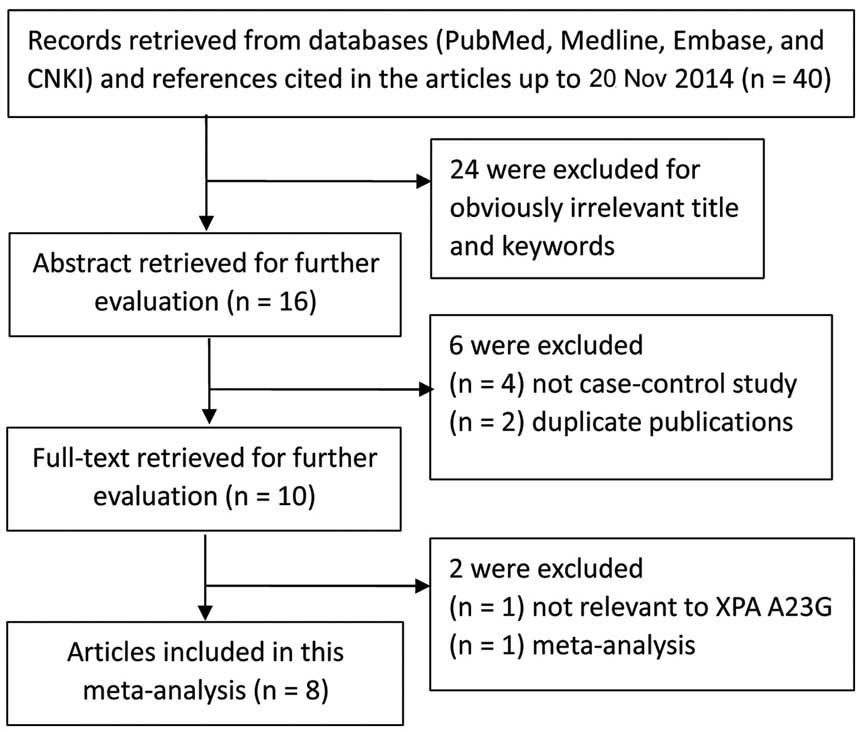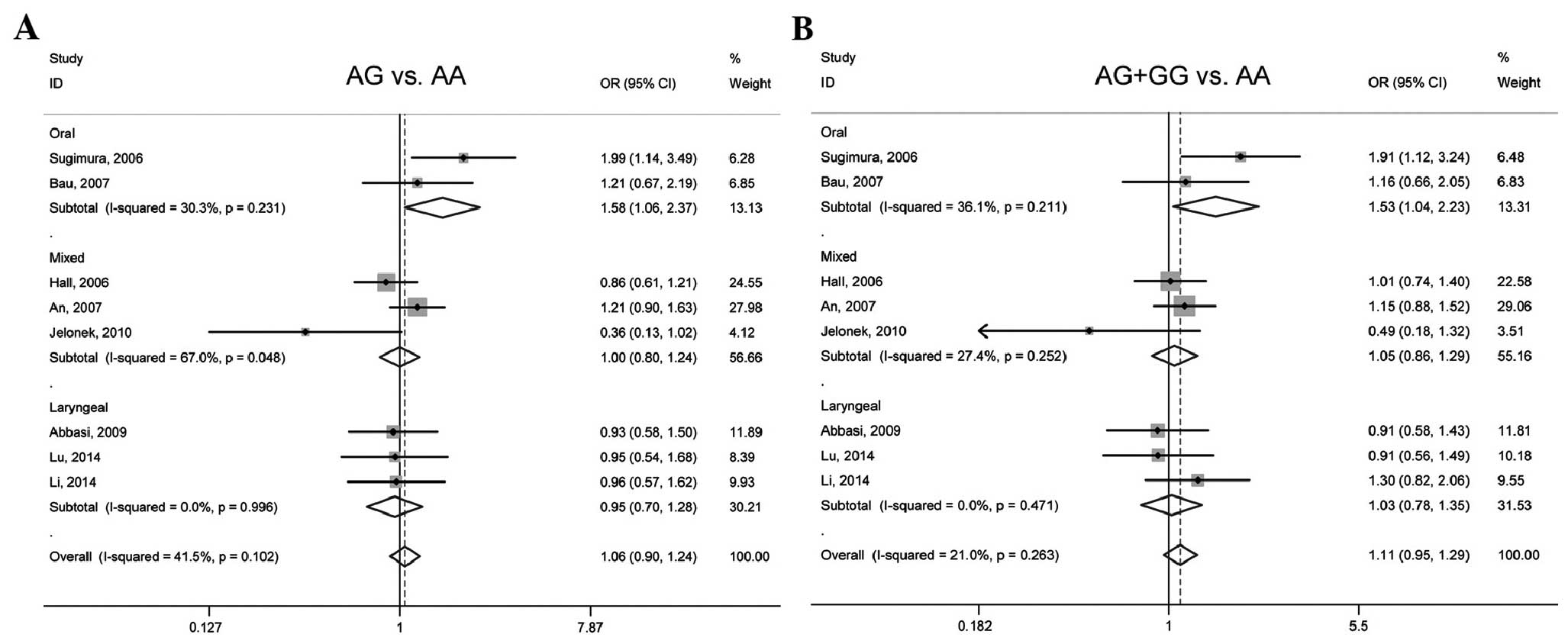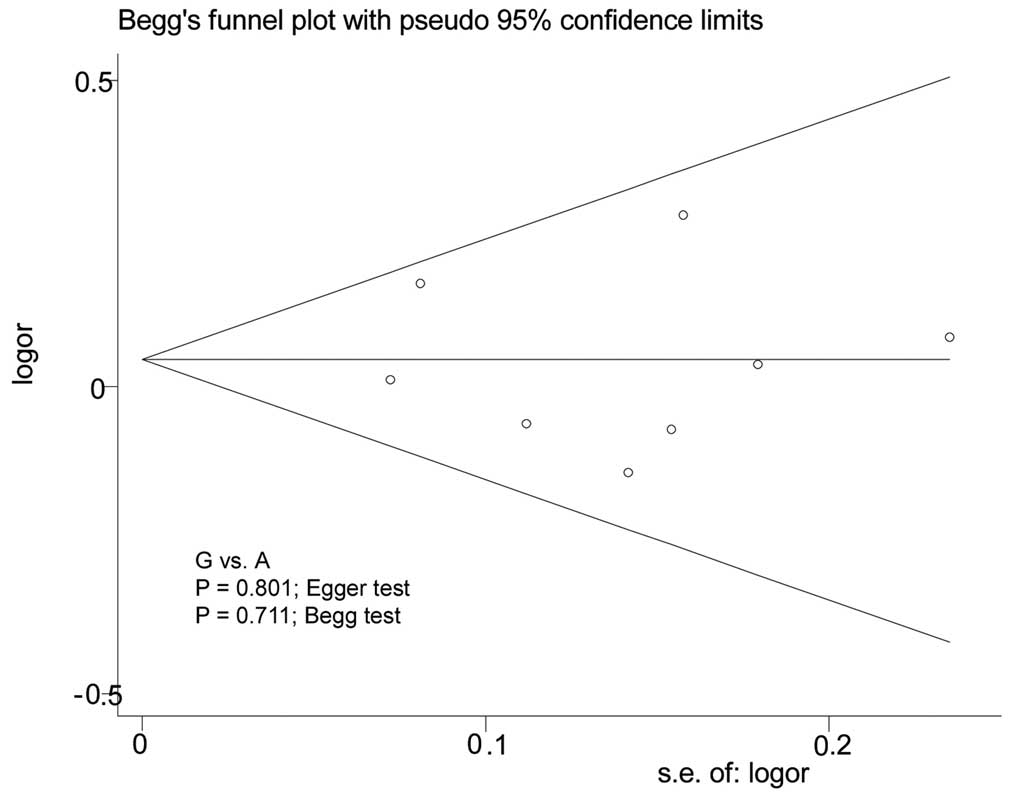|
1
|
Siegel R, Naishadham D and Jemal A: Cancer
statistics 2012. CA Cancer J Clin. 62:10–29. 2012. View Article : Google Scholar : PubMed/NCBI
|
|
2
|
Marur S, D'Souza G, Westra WH and
Forastiere AA: Hpv-associated head and neck cancer: a virus-related
cancer epidemic. Lancet Oncol. 11:781–789. 2010. View Article : Google Scholar : PubMed/NCBI
|
|
3
|
Marron M, Boffetta P, Zhang ZF, et al:
Cessation of alcohol drinking, tobacco smoking and the reversal of
head and neck cancer risk. Int J Epidemiol. 39:182–196. 2010.
View Article : Google Scholar : PubMed/NCBI
|
|
4
|
Leemans CR, Braakhuis BJ and Brakenhoff
RH: The molecular biology of head and neck cancer. Nat Rev Cancer.
11:9–22. 2011. View
Article : Google Scholar : PubMed/NCBI
|
|
5
|
Shell SM, Li Z, Shkriabai N, Kvaratskhelia
M, et al: Checkpoint kinase ATR promotes nucleotide excision repair
of UV-induced DNA damage via physical interaction with xeroderma
pigmentosum group A. J Biol Chem. 284:24213–24222. 2009. View Article : Google Scholar : PubMed/NCBI
|
|
6
|
Vaid M, Sharma SD and Katiyar SK:
Proanthocyanidins inhibit photocarcinogenesis through enhancement
of DNA repair and xeroderma pigmentosum group A-dependent
mechanism. Cancer Prev Res (Phila). 3:1621–1629. 2010. View Article : Google Scholar : PubMed/NCBI
|
|
7
|
Krasikova YS, Rechkunova NI, Maltseva EA,
Petruseva IO and Lavrik OI: Localization of xeroderma pigmentosum
group A protein and replication protein A on damaged DNA in
nucleotide excision repair. Nucleic Acids Res. 38:8083–8094. 2010.
View Article : Google Scholar : PubMed/NCBI
|
|
8
|
Liu J, Zhang Z, Cao XL, et al: XPA A23G
polymorphism and susceptibility to cancer: a meta-analysis. Mol
Biol Rep. 39:6791–6799. 2012. View Article : Google Scholar : PubMed/NCBI
|
|
9
|
Ding D, Zhang Y, Yu H, et al: Genetic
variation of XPA gene and risk of cancer: a systematic review and
pooled analysis. Int J Cancer. 131:488–496. 2012. View Article : Google Scholar : PubMed/NCBI
|
|
10
|
Lou Y, Li R, Zhang Y, et al: XPA gene
rs1800975 single nucleotide polymorphism and lung cancer risk: a
meta-analysis. Tumour Biol. 35:6607–6617. 2014. View Article : Google Scholar : PubMed/NCBI
|
|
11
|
Sugimura T, Kumimoto H, Tohnai I, et al:
Gene-environment interaction involved in oral carcinogenesis:
molecular epidemiological study for metabolic and DNA repair gene
polymorphisms. J Oral Pathol Med. 35:11–18. 2006. View Article : Google Scholar : PubMed/NCBI
|
|
12
|
Hall J, Hashibe M, Boffetta P, et al: The
association of sequence variants in DNA repair and cell cycle genes
with cancers of the upper aerodigestive tract. Carcinogenesis.
28:665–671. 2006. View Article : Google Scholar : PubMed/NCBI
|
|
13
|
An J, Liu Z, Hu Z, et al: Potentially
functional single nucleotide polymorphisms in the core nucleotide
excision repair genes and risk of squamous cell carcinoma of the
head and neck. Cancer Epidemiol Biomarkers Prev. 16:1633–1638.
2007. View Article : Google Scholar : PubMed/NCBI
|
|
14
|
Bau DT, Tsai MH, Huang CY, et al:
Relationship between polymorphisms of nucleotide excision repair
genes and oral cancer risk in Taiwan: evidence for modification of
smoking habit. Chin J Physiol. 50:294–300. 2007.PubMed/NCBI
|
|
15
|
Abbasi R, Ramroth H, Becher H, Dietz A,
Schmezer P and Popanda O: Laryngeal cancer risk associated with
smoking and alcohol consumption is modified by genetic
polymorphisms in ERCC5, ERCC6 and RAD23B but not by polymorphisms
in five other nucleotide excision repair genes. Int J Cancer.
125:1431–1439. 2009. View Article : Google Scholar : PubMed/NCBI
|
|
16
|
Jelonek K, Gdowicz-Klosok A, Pietrowska M,
et al: Association between single-nucleotide polymorphisms of
selected genes involved in the response to DNA damage and risk of
colon, head and neck and breast cancers in a Polish population. J
Appl Genet. 51:343–352. 2010. View Article : Google Scholar : PubMed/NCBI
|
|
17
|
Lu B, Li J, Gao Q, Yu W, Yang Q and Li X:
Laryngeal cancer risk and common single nucleotide polymorphisms in
nucleotide excision repair pathway genes ERCC1, ERCC2, ERCC3,
ERCC4, ERCC5 and XPA. Gene. 542:64–68. 2014. View Article : Google Scholar : PubMed/NCBI
|
|
18
|
Li X, Xu J, Yang X, et al: Association of
single nucleotide polymorphisms of nucleotide excision repair genes
with laryngeal cancer risk and interaction with cigarette smoking
and alcohol drinking. Tumour Biol. 35:4659–4665. 2014. View Article : Google Scholar : PubMed/NCBI
|
|
19
|
Zhang L, Wang Y, Qiu Z, Luo J, Zhou Z and
Shu W: The XRCC1 Arg194Trp polymorphism is not a risk factor for
glioma: A meta-analysis involving 1,440 cases and 2,562 controls.
Exp Ther Med. 4:1057–1062. 2012.PubMed/NCBI
|
|
20
|
Zhuo XL, Ling JJ, Zhao HY, Zhou Y, Song YF
and Tan YH: Lack of association of the cyclin D1 G870A variation
with oral carcinoma risk: Evidence from 2,404 subjects. Exp Ther
Med. 4:748–754. 2012.PubMed/NCBI
|
|
21
|
Schena M, Guarrera S, Buffoni L, et al:
DNA repair gene expression level in peripheral blood and tumour
tissue from non-small cell lung cancer and head and neck squamous
cell cancer patients. DNA Repair (Amst). 11:374–380. 2012.
View Article : Google Scholar : PubMed/NCBI
|
|
22
|
Azad AK, Bairati I, Samson E, et al:
Validation of genetic sequence variants as prognostic factors in
early-stage head and neck squamous cell cancer survival. Clin
Cancer Res. 18:196–206. 2012. View Article : Google Scholar : PubMed/NCBI
|
|
23
|
Song X, Sturgis EM, Jin L, Wang Z, Wei Q
and Li G: Variants in nucleotide excision repair core genes and
susceptibility to recurrence of squamous cell carcinoma of the
oropharynx. Int J Cancer. 133:695–704. 2013. View Article : Google Scholar : PubMed/NCBI
|












